Table of contents
- Green racing tire from Michelin In MotoE on recycled rubbers
- Recycling vs. recovery
- Michelin MotoE
- 71 times Marquez
- Orange peel, tree sap and scrap metal
- What is pyrolysis?
- What is Michelin doing differently now??
- opinion poll
- Conclusion

Energica / Michelin


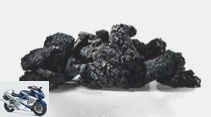
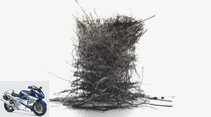
6th pictures

Energica / Michelin
1/6
Until 2022, the MotoE electric motorcycle world championship will be racing exclusively on the racers from electric pioneer Energica as part of MotoGP.
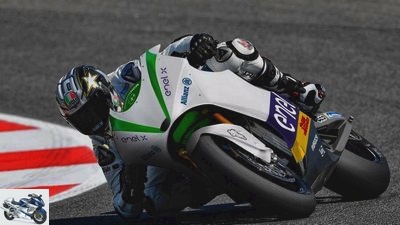
Energica / Michelin
2/6
The basis of the E-Renner is the Energica Ego RS with a good 150 PS and 215 Nm torque. The tires come from Michelin. Michelin will build the new Power Slick MotoE from 2021 from up to 40% sustainable materials.
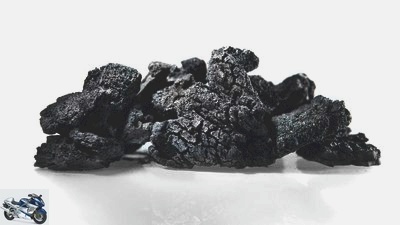
Enviro
3/6
One of these materials is recycled carbon black. This gives the tire its black color and increases its abrasion resistance. The soot is obtained in a special pyrolysis process.
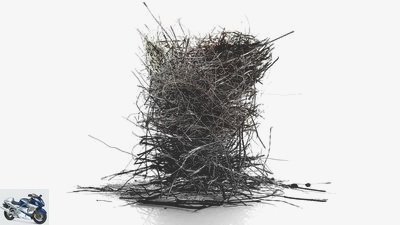
Enviro
4/6
High-quality scrap metal is also produced in the same process. This is re-melted and used for the bead core and sometimes belt layers of the tire.
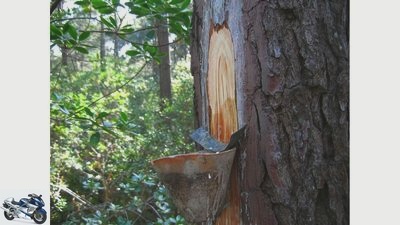
Wikipedia
5/6
Pine resin is used as the basis for isoprene. The fabric makes the rubber of the tire more pliable.
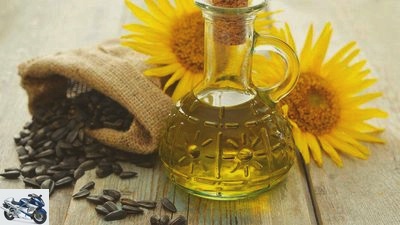
Maggi
6/6
Sunflower oil, which is used in rubber as a natural substitute for flavored oils, has the same effect.
counselor
technology & future
Michelin builds racing tires from old tires
Green racing tire from Michelin
In MotoE on recycled rubbers
Green Mobility? Check. Green racing? Hurdles. One step towards sustainable racing is e-motorcycles, another racing tire made from recycled material.
Jens Kratschmar
05/06/2021
In this article:
- Recycling vs. recovery
- Michelin MotoE
- 71 times Marquez
- Orange peel, tree sap and scrap metal
- What is pyrolysis?
- What is Michelin doing differently now??
- Conclusion
If a tire only lasted one day on the road, the devil would break loose. Such mileage is normal in racing, and sometimes desirable when it comes to grip. The electric pioneers of Energica as the exclusive manufacturer of motorcycles in MotoE with a role model function. Tire supplier Michelin is following suit – at least a little – and is presenting a new tire for MotoE, made from 33 to 40 percent sustainable material.
Recycling vs. recovery
Recycling is defined as the process of extracting a secondary raw material from a discarded material that can be used to manufacture new – mostly different – products. On the other hand, there is the utilization or final utilization as fuel for energy generation. In between, the circular economy has been growing for several years. Within the cycle, new processes are to be used to recycle materials of such a high quality that they can flow directly back into the manufacture of the same product. This is particularly interesting for manufacturers of wear products with many different components and high energy and raw material consumption. Among other things: tires
Michelin MotoE
Black and round. Two properties that apply to the majority of all tires. The shape comes from physics, the color from the soot, which makes the rubber more abrasion-resistant and more resistant to environmental influences. Right here sets Michelin in the new MotoE racing tire and uses soot obtained from old tires. This is obtained in a special pyrolysis process by the Swedish start-up Enviro and is of such high quality that, unlike some other processes, it can be reused in tires. And in this case in a racing tire in the world championship with the highest demands on grip, durability and reliability. What does that do for the environment? Globally, the industry uses around 10 million tons of carbon black per year for all types of rubber. Every kilo of newly produced soot consumes two to three liters of crude oil. The savings potential for recycled carbon black is enormous.
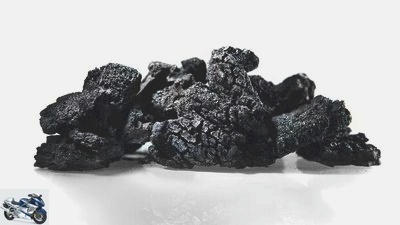
Enviro
71 times Marquez
Michelin wants to sustainably obtain 40 percent of the materials for all tires by 2030. Say recycling and circular economy. The new MotoE rear tire already meets the target, and in the 2021 season it will be made from 40% sustainable materials. The front tire is well on its way with a 33 percent share. Overall, Michelin assumes that with the use of the green tire in MotoE, a good 4.6 tonnes of sustainable materials will be used per season – 71 times the weight of Marc Marquez or 13,143 Pizza Margherita. A good 20 tons of old tires have already been recycled for the development of the new racing tires. The balance seems positive.
MotoE drivers have 16 tires available per race weekend, nine slicks and seven rain tires: four slicks at the front, five at the rear, three rain tires at the front and four at the rear. There are no different compounds, MotoE uses standard tires. In double races, the total number of tires increases to eleven and nine.

Energica / Michelin
Orange peel, tree sap and scrap metal
It takes more than just the carbon black to get the 33 and 40 percent sustainable materials in Michelin tires. In addition to rubber for the rubber, other natural ingredients also include sunflower oil, pine resin and peel of oranges and lemons. Sounds a bit like summer lettuce but it’s actually in the ripe. Sunflower oils have been used in tire construction for a long time in order to be able to process the rubber better and to make the rubber more pliable. Put simply, sunflower oil replaces petroleum in this form. The use of pine resin as the basis for the isoprene used in rubber, which in various combinations increases wet grip and mileage, goes in the same direction. It gets interesting with the orange and lemon peels: they are the basis for synthetic rubber in a very new process. Bioethanol is extracted from the shells and, in a further step, butadiene is used as the raw material for synthetic rubber. In this case, the biomass replaces crude oil. The scrap metal is also produced in the special pyrolysis process developed by Michelin and Enviro and is used in the belt layers and bead cores of the new tires.
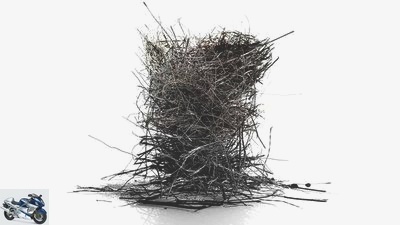
Michelin Enviro
What is pyrolysis?
Pyrolysis is a common method of heating materials in the absence of oxygen. The material does not burn, but carbonizes. This is comparable to the production of charcoal. Modern pyrolysis processes work with nitrogen, which is heated to at least 400 degrees Celsius. Exact temperatures are a trade secret. If old tires are heated by pyrolysis, valuable raw materials such as so-called industrial soot, gas, oil and steel can be recycled from the tire. Carbon black is particularly interesting because it is used in almost all industrial rubber products. In the tire it ensures the black color, increases its mileage and makes it more resistant to environmental influences.
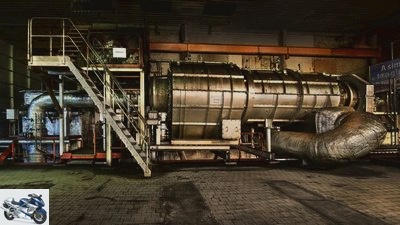
Enviro
What is Michelin doing differently now??
The Swedish company Enviro, in which Michelin holds a 20 percent stake, has developed its own pyrolysis process and can significantly increase the quality of the recovered soot through special temperature regulation. Current processes work on the principle of tumble dryers: The heat is transferred from the outside to a drum that heats the nitrogen inside. As a result, the temperature inside the drum and the tire residues to be processed are never the same, which is made even more difficult by the rotation of the drum. In addition, the conventional method requires the separation of the rubber from the steel of the carcass and the tire bead in advance.
Enviro, on the other hand, fills a reactor with unseparated tire residues and adds the already hot gas. In this way, the entire material heats up faster and more evenly, like in a convection oven. This saves a lot of energy, and there is no need to separate the rubber from the steel beforehand. However, the method requires precise monitoring and control of the temperatures. Enviro uses this method to increase the quality of the carbon black, so that it can then also be used for the production of high-quality tires. In addition, so-called pyrolysis gases and oils are produced, which are useful in the operation of the plant. The steel that is also left over is reused in smelting works. A process that Michelin and Enviro industrialized by founding their own factory.
opinion poll
Voted 41 times
Can racing at all be sustainable in terms of the environment?
Yes, as with all sustainability, it depends on the behavior of the individual.
No, the goal of being the fastest cannot go easy on the environment.
read more
Conclusion
Green racing and laboratory at the same time: MotoE with the main players Energica and Michelin are leading the way. Energica continues to develop its technology and Michelin can subject new materials and methods to endurance tests. That could contribute to a more sustainable mobility of tomorrow.
Related articles
-
Sports tires Dunlop GP Racer D212 and Michelin Power RS
Dunlop accesories tire Sports tires Dunlop GP Racer D212 and Michelin Power RS Test Dunlop GP Racer D212 and Michelin Power RS New sports tires from…
-
Ten new Michelin tires for sport, touring and cruiser
Michelin 18th pictures Michelin 1/18 The Power 5 is available to replace the Power RS and Power RS + sports tires. Michelin 2/18 The Power 5 comes in…
-
Michelin Power RS + sports tires in the wetness test
Michelin accesories tire Michelin Power RS + sports tire in a wet test Michelin Power RS + Improved sports tire in the wet test Michelin has optimized…
-
Michelin Road Classic: tires for young and old timers
Michelin 9 pictures Michelin 1/9 The successor to the tried and tested Michelin Pilot Activ has been completely redesigned and is intended to combine the…
-
Sports tires in the 2013 tire test
Jahn 23 pictures Jahn 1/23 The 2013 MOTORRAD sports tire test. Jahn 2/23 The sports tires on the country road and motorway. Jahn 3/23 Where did the…
-
Enduro tires tested 110-80 R 19, 150-70 R 17
markus-jahn.com 34 pictures markus-jahn.com 1/34 Enduro riding … markus-jahn.com 2/34 Especially during the wet test, the GS rolled out with a…
-
Market overview of new motorcycle tires 2016
markus-jahn.com 28 pictures manufacturer 1/28 Metzeler Racetec RR / Compk Slick: With these two slicks, the super sporty RR family (from M7 RR) should…
-
Enduro tires in the 2013 tire test
Jahn 44 pictures Jahn 1/44 Tire test 2013: 6 pairs of enduro tires: 110/80 R19, 150/70 R17. Jahn 2/44 Six enduro tires in country roads, wet conditions…
-
Motorcycle touring tires 120-70 ZR 17 and 180-55 ZR 17 in the test
Jahn 30th pictures Jahn 1/30 mps photo studio 2/30 Metzeler Roadtec Z8 Interact: MOTORRAD verdict: 6th place, 212 points. mps photo studio 3/30 Michelin…
-
Repair motorcycle tires or not. What is allowed?
5 pictures 1/5 Annoying: screw in the tire and no more inflation pressure. Repairing is legally and technically possible. 2/5 Breakdown assistance…